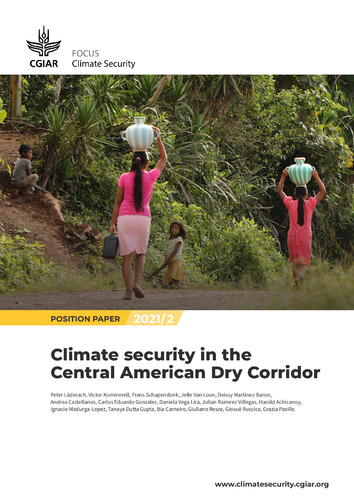Climate security in the Central American Dry Corridor
The evidence on conflicts around the world since the turn of the century points to a simple conclusion: conflicts, grievances and insecurities are increasingly being affected by changing climates, environmental degradation, food insecurity, and the struggle to control a finite pool of natural resources. This paper aims to understand the linkages between climate, conflict, agriculture, and
migration in the Central American Dry Corridor and offer a road map for the region while emphasizing the role of research and development. We do this by first clarifying what climate security means and how it links to risk and resilience (introduction). We then present causal impact pathways to describe how climate exacerbates drivers of conflict and insecurity (Section 1). We continue with a social media and policy coherence analysis to explain how the linkages between climate and conflict are perceived by the public (Section 2) and represented in public policies (Section 3). We then describe the linkages between climate and security for Honduras, El Salvador and Guatemala (Section 4). This is followed by an overview of indicators summarizing the state of climate security in Central America and the Dry Corridor and a discussion of the limitations of such indicators (Section 5). We then present existing research for development efforts and discuss their potential to contribute to climate security by mitigating its drivers (Section 6). We offer entry points for improving climate security in the Central American Dry Corridor (Section 7) and finally, Section 8 proposes entry points for incorporating climate security dimensions into rural development and regional and national security policy and research agendas.

